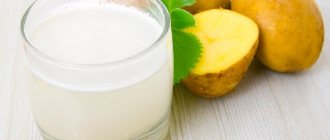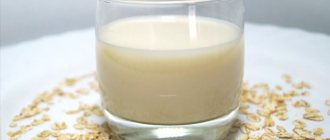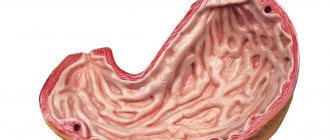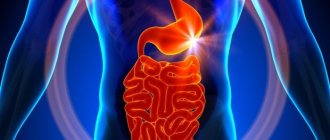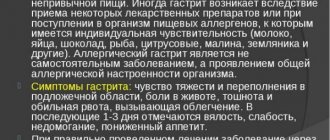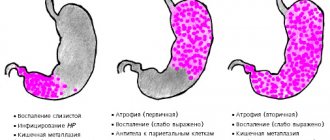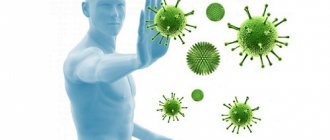Gastritis is characterized by inflammation of the epigastric mucosa, which disrupts many functions of the organ. Today, the disorder is widespread among diseases of the digestive tract. Slightly more than half of the population suffers from inflammation of the stomach and needs treatment. Pathology occurs in adults and children.
In medicine, it is customary to distinguish several types of gastritis. Among them, acute, superficial, erosive and chronic types of gastritis are more common. Everyone has special symptoms and treatment requires a special approach. In order for a doctor to accurately determine the type of gastritis in a patient, it is necessary to undergo an examination, including tests and gastroscopy.
Erosive gastritis is recognized as the most dangerous gastritis for human health. The infection affects the gastric mucosa, creating the risk of ulcers.
Symptoms
Erosive gastritis is accompanied by the appearance of small ulcers on the mucous membrane, reflected by severe pain. This type of stomach disease is difficult to treat and often has serious consequences.
This category of inflammation is accompanied by symptoms similar to other gastric pathologies. Particularly noteworthy are acute abdominal pain, high levels of gastric juice secretion, and pressure changes. Less commonly, the disease is indicated by a lack of hydrochloric acid from gastric juice: in medicine, the phenomenon is called achlorhydria.
As practice shows, patients do not take the symptoms of erosion seriously. Stomach ulcers progress and the human body suffers. When health is already in a critical condition, a person decides to consult a doctor for advice.
The development of erosive gastritis is largely due to the following factors:
- Alcohol;
- Abuse of strong tea;
- Food oversaturated with spices;
- Binge eating.
Etiology and pathogenesis
The occurrence of erosions in the antrum of the stomach is associated with significant thinning of the membranes and walls, while the muscle layer remains completely intact. Healing of the wound surface leads to the formation of scars on the wall and disruption of normal digestive function in this area. Scars are formed as a result of long-term damaging effects on the mucous membrane of various factors.
The most common causes of erosion in the antrum of the stomach include the following:
- diseases of the heart and blood vessels;
- hormonal imbalance;
- taking aggressive medications;
- terminal stages of cirrhosis or nephritis;
- smoking;
- drinking alcohol in large quantities;
- poisoning with chemical compounds or heavy metals;
- stress;
- excessive activity of the vagus nerve and the release of excess hydrochloric acid;
- errors in diet;
- Helicobacter pylori infection;
- consumption of excessively hot or cold food;
- binge eating;
- eating fast food.
The development of gastric erosions is a hereditary pathology.

As a result of the irritating effects of various factors, single hyperplastic aphthous papules are formed on the surface of the membrane, from which multiple superficial ulcers are formed over time. The acute process causes significant inflammatory symptoms, and when it subsides, chronic mucosal erosion occurs. It consists of areas containing flat and dense scars in which epithelization has occurred. They alternate with foci containing an ulcer. Acute gastric erosions are characterized by areas with absent epithelium, and the gastric mucosa looks like a gaping wound.
Diagnostics
The erosive form of gastritis is considered a serious deviation in the functioning of the stomach; for the sake of your own health, you should immediately consult a doctor. A timely diagnosis and appropriate treatment contribute to the successful overcoming of the disease.
When diagnosing a patient who complains of abdominal pain, instrumental research methods are used. Fibrogastroscopy with targeted biopsy is considered an effective and efficient method of diagnosis. The method accurately determines the location of scars and the severity of damage to the gastric mucosa. In some cases, the patient is referred for fluoroscopy, ultrasound or computed tomography.
Therapy is carried out under the close supervision of a doctor - until the disease is completely eliminated, the patient is in danger. Often, severe hemorrhage causes death; if gastritis is suspected, the disease must be treated immediately.
Diagnosis of the disease
With gastritis, the signs are nonspecific. For accurate diagnosis, a number of studies are carried out:
- breath test;
- pH-metry;
- FEGDS;
- polymerase chain reaction;
- blood is donated for general and biochemical analysis;
- plain (and with contrast) x-ray;
- stool is taken to check for occult blood;
- histological biopsy;
- CT;
- linked immunosorbent assay;
- Ultrasound of the abdominal cavity.
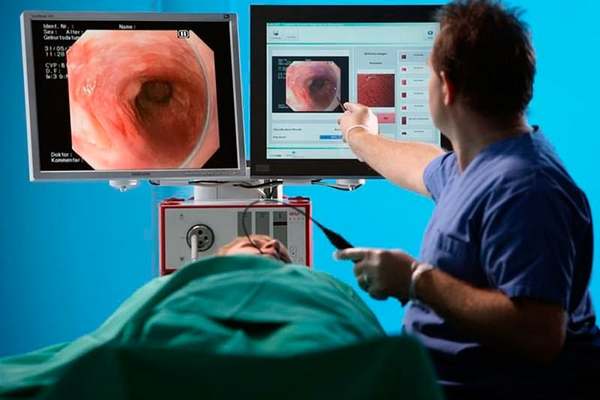
With the erosive form of gastritis in the stomach during FEGDS, spotty hyperemia, edema, and erosion are revealed. During endoscopy, pieces of tissue are taken for analysis. To prescribe the correct treatment, a urease test is required. Inoculation on a nutrient medium may be required. If there is a suspicion that the patient has internal bleeding, the stool must be examined.
Treatment of erosive gastritis
Treatment of erosive gastritis of the antrum of the stomach depends on the form of the disease, symptoms, and causes. Therapy includes not only medication, but also traditional medicine and physiotherapy.
Basic principles
Treatment is aimed at eliminating the cause of the disease, healing erosions, eliminating pain and bleeding. The patient must adhere to a certain diet prescribed by the doctor. In case of severe internal bleeding, surgical intervention is possible.
Therapy is mainly medicinal. It is used at the first stage of the disease. In the second, therapy is aimed at restoring the affected tissues. Then folk remedies can be used as auxiliaries.
Classification
In medicine, a similar classification of erosive types is distinguished:
- Erosive acute gastritis;
- Erosive chronic gastritis;
- Erosive antrum gastritis;
- Reflux gastritis.
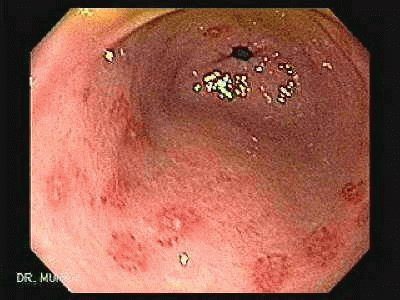
Erosive type of gastritis
Acute erosive gastritis
The form of the disease progresses rapidly. The disease primarily causes disorders in the distal epigastric region. If an acute form of gastritis is detected in a patient, systematic therapy is prescribed, the symptoms and damage from the disease are neutralized
Acute gastritis differs from other forms of gastritis by prolonged pain that intensifies after eating. There are attacks of nausea and heartburn. During vomiting, the contents of the stomach are released, followed by mucus and gastric juice. Sometimes blood is noticeable, indicating internal bleeding.
Treatment of the acute form of erosive gastritis does not differ from the treatment of other stomach diseases.
Chronic erosive gastritis
This form of inflammation of the gastric mucosa is subtle. Pathology develops in the lower part of the epigastrium, where the stomach passes into the duodenum. Chronic antral gastritis, as it is called, is marked by increased secretion of gastric juice and increased acidity. As a rule, the disease becomes the result of superficial gastritis that is not cured in time.
The patient may not suspect for a long time that he has a chronic form of erosive gastritis. Gradually, gastritis of the antrum of the stomach, where food is prepared for transportation to the intestines, leads to disruption of the epigastric region. The first signs of the disease appear. Pathology in the functioning of the antrum leads to the entry into the intestines of poorly processed substances with high acidity. This blocks the normal functioning of the intestines, causing disorder of the walls of the duodenum.
The chronic type is indicated by rare urges of nausea, flatulence and abdominal pain. Sometimes there is bleeding. When diagnosing, endoscopy is used, with which the doctor checks for scars on the walls of the mucous membrane.
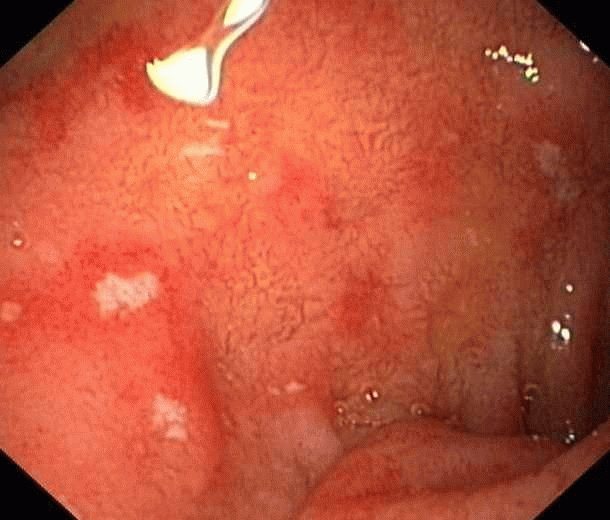
Scars on the gastric mucosa
Antrum
Erosive antral gastritis is a pathology of the epigastric antral mucosa, characterized by serious inflammation that disrupts important functions of the gastrointestinal tract. Often found in clinical practice. At the beginning of its development, the disease does not manifest itself with pronounced symptoms; it takes a lot of time for the symptoms to develop. At a certain point, the patient begins to be bothered by the symptoms of the disease:
- Sudden attacks of pain in the stomach after eating;
- Sour belching;
- Attacks of nausea;
- Diarrhea, constipation;
- Heartburn;
- Lack of appetite;
- Heavy bleeding;
- Fast fatiguability.
The causative agent of this form of gastritis is considered to be the bacterium Helicobacter pylori. Erosive antral gastritis is characterized by disruption of the gastric mucosa. Lesions can be single and located in a separate place in the epigastrium, or they combine, creating large areas of necrosis, which damages the blood vessels, creating bleeding.
Reflux gastritis
When suffering from reflux gastritis, the patient experiences inflammation of the epigastric mucosa, which undermines the process of food digestion. The contents of the duodenum are thrown into the stomach, disrupting the functioning of the gastrointestinal tract. At the same time, acids and bile are released from the intestines. As a result, inflammation begins due to the body’s inability to resist factors that destroy the stomach.
The main causes of the disease:
- Other inflammatory processes in the digestive organs;
- Abuse of painkillers;
- Stomach surgery.
In addition to symptoms similar to other forms, reflux gastritis has special symptoms - dry mouth and high temperature.
Diet menu for antral gastritis for a week
The diet for a patient with erosive antrum gastritis is based on the type of pathology and associated factors. This form of the disease alternates between exacerbation and remission. Antrum occurs against a background of low or high acidity. For each stage of treatment there is its own menu.
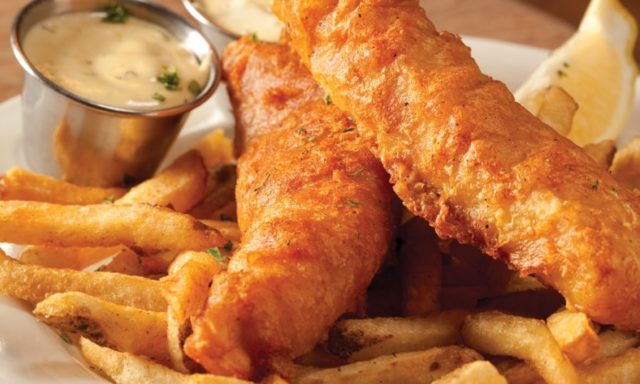
Fried foods, sauces, fats should be excluded from the menu
Important! For erosive gastritis, you must adhere to a strict diet for 1-3 months. Then the diet can be diversified.
The diet for the treatment of antrum gastritis should be discussed with your doctor, he will recommend diets. A sample menu is presented for each day of the week. Monday:
- breakfast – steam omelet with milk;
- lunch - rice soup with meat broth, crackers, baked apples with cottage cheese and honey;
- afternoon snack – semolina casserole with pumpkin, berry jelly;
- dinner – zucchini puree, fish balls.
On Tuesday, when dieting, you can cook:
- breakfast - oatmeal in water with pieces of blackberries and strawberries;
- lunch - noodle soup cooked in chicken broth, banana, cookies;
- afternoon snack – fruit and milk cocktail, cheesecakes with raisins, baked in the oven;
- dinner - boiled potato wedges, minced chicken cutlets and cottage cheese.
Recommended reading: Benefits of strawberries for the body
Wednesday:
- breakfast – buckwheat porridge with honey and a piece of butter, rose hip decoction;
- lunch – pollock fish soup with potatoes and small vermicelli, pumpkin puree, weak hour with dryers;
- afternoon snack – milk, boiled egg, bread;
- dinner - vegetable stew with pieces of chicken, baked beef, jelly.
On Thursday the menu looks like this:
- breakfast - omelet, dried fruit compote, crackers;
- lunch - cauliflower cabbage soup, potato and zucchini casserole;
- afternoon snack – cottage cheese casserole with peaches, milk;
- dinner - baked hake with carrots, beet salad with flax seeds and butter.
On Friday they prepare:
- breakfast - rice porridge with milk, a piece of butter, cookies, tea;
- lunch – noodle soup with turkey, pumpkin casserole;
- afternoon snack – millet porridge;
- dinner - cherry jelly, rice cutlets with chicken.
For Saturday you can create the following menu:
- breakfast – oatmeal with raisins and prunes;
- lunch – buckwheat soup, rice cutlets;
- afternoon snack - banana;
- dinner – berry jelly, milk.
Sunday is planned as follows:
- breakfast – buckwheat casserole with cottage cheese;
- lunch – steamed omelette, fish meatballs, jelly;
- afternoon snack - semolina porridge;
- dinner - meat soufflé, tea, bun.
Diseases associated with erosive gastritis
As already noted, some forms of erosive gastritis are the cause of untreated diseases of the gastrointestinal tract. The most common sources of inflammation of the gastric mucosa are varieties of duodenitis. In some cases, gastritis independently acts as a causative agent of other pathologies.
Inflammation with swelling
The development of inflammation in the duodenum, accompanied by thickening of the folds of the mucous membrane, which leads to swelling of the organs, is called superficial duodenitis in medicine. As an independent pathology, duodenitis is rare. More often it is provoked by other diseases of the digestive tract, for example, inflammation of the small intestine or ulcers.
Symptoms of the course of the disease are determined by the degree of progress of duodenitis, the number of stages passed by the disease. In most situations, patients experience pain in the epigastric region. Symptoms typical of all types of inflammation of the digestive tract occur: nausea, impotence and high fever. During the transition of the disease from stage to stage, manifestations fade away for a short time.
Superficial duodenitis has two stages:
- The period of exacerbation is constant pain.
- Remission period - symptoms disappear.
The patient can go through both stages in a circle until the disease becomes chronic.
The causes of superficial duodenitis are similar to the factors influencing the progression of gastritis. In addition to them, the negative effects of toxins during acute and chronic poisoning and the influence of infection are highlighted.

Superficial duodenitis
Diagnosis and treatment
When making a diagnosis, it is necessary to collect tests of blood, intestines and stomach contents. Based on the data obtained, the doctor diagnoses the disease.
Therapy for superficial duodenitis involves a strict diet and regular visits to the attending physician. Antispasmodics and anti-vomiting medications help combat unpleasant symptoms. If the acidity level is high, the doctor prescribes antacid medications, inhibitors and drugs containing bismuth to the patient.
It is recommended to eat foods high in protein, juices from fruits and vegetables. You should eat at least 5-6 times a day. This will make it possible for the bile to function normally, and the secretion will not accumulate in the gallbladder.
Self-treatment and alternative medicine help little in the fight against superficial duodenitis.
Symptoms of the disease
The time for symptoms to appear depends on the form of the disease. In acute erosive gastritis, symptoms develop quickly and appear:
- alternating constipation and diarrhea;
- burning in the stomach area;
- belching;
- rumbling in the intestines;
- vomiting blood;
- dark stool;
- pain, spasms in the epigastrium;
- increased gas formation;
- the pain intensifies after each meal.
The chronic form is accompanied by more muted symptoms or they are absent altogether. Possible appearance:
- belching;
- heartburn;
- heavy sweating;
- loss of strength;
- poor appetite;
- flatulence;
- diarrhea;
- dull pain or noticeable discomfort in the epigastrium;
- heaviness in the stomach.
If erosive bulbitis starts, it can provoke internal bleeding. When losses are small, the following manifestations are present:
- heat;
- exhaustion of the body;
- anemia;
- weakening of the immune system.
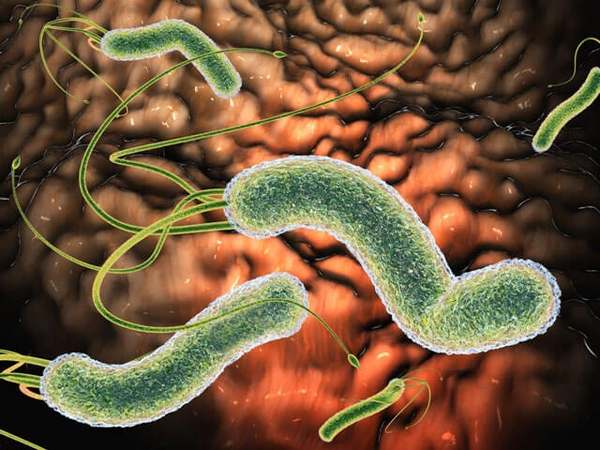
In case of erosion damage, severe pallor of the skin, vomiting with blood, tachycardia and melena are noted. The main signs of reflux gastritis are bitter belching, an unpleasant taste in the mouth, a white coating is visible on the tongue, and bloating is observed. Atrophy of the glands gradually occurs. Then the pain disappears. However, there remain feelings of fullness in the stomach, loss of appetite and rapid satiety.
Bile reflux
Duodeno-gastric reflux is a syndrome that accompanies diseases of the gastrointestinal tract: inflammation of the epigastrium, ulcers or duodenitis. The disease is characterized by the release of bile from the duodenum into the stomach.
The syndrome progresses as a result of pathology of duodenal patency, which causes pressure in the duodenum to increase; the pyloric closure mechanism becomes weaker. Among the causes are microbial imbalance, hernia, pregnancy, low tone of the esophageal muscles, and concomitant medications.
Duodeno-gastric reflux is associated with other diseases of the digestive system, the symptoms are similar. In some cases, the disease does not manifest itself, only sometimes making itself felt during sleep or when doing physical exercise. It is believed that in such situations nothing threatens the human digestive system.

Diagnosis and treatment
Diagnosing the syndrome is not difficult. It is recommended to undergo fibrogastroduodenoscopy, examine the acidity level of the cardiac epigastrium and the lower third of the esophagus. An ultrasound of the abdominal cavity and an x-ray of the stomach are prescribed. An accurate examination of acidity contributes to the correct diagnosis. Some doctors insist on overnight monitoring, which will not take into account the effect on the acidity level of food or medications taken.
Treatment of duodenogastric reflux involves ensuring the normal functioning of the stomach and duodenum. Diet contributes to healing: it is important for the patient to eat more often, but limit it to small portions. Alcohol and smoking are strictly prohibited during and after treatment.
Inflammation with wound formation
Erosive gastroduodenitis differs from other forms of duodenitis by the formation of many small wounds on the mucous membrane of the stomach and duodenum. Often an ulcer progresses based on the disease.
The manifestation of the disease depends on the location of the pathology. Most often, patients are worried about weakness, insomnia and headaches. There is a feeling of nausea, sometimes abdominal pain. No appetite. The main distinguishing sign of erosive gastroduodenitis is nausea with blood in the morning and at noon.
The formation of pathology is influenced by internal and external factors. External causes include all types of inflammation of the digestive organs. Among the internal factors there are:
- High level of acidity;
- Throwing the contents of the duodenum into the stomach;
- Liver diseases;
- Infections.
Features of erosive antral gastritis
Erosive antral gastritis is localized in the lower part of the stomach. The peculiarity of this type of disease lies in the reasons for its occurrence. The reason for this is pathogenic microorganisms, which, after entering the body, settle on the mucous membrane and begin active life.
Bacteria disrupt glandular functioning, as a result of which the required enzyme is not produced in full. At the same time, microorganisms interfere with the neutralization of gastric juice, which increases the acidity of the stomach. This leads to inflammation of the mucous membrane, tissue irritation and disruption of glandular cells.

As a result, digested food moves along with acid through the gastrointestinal tract. This causes a number of additional complications in the vascular system and duodenum. A metabolic disorder occurs.
